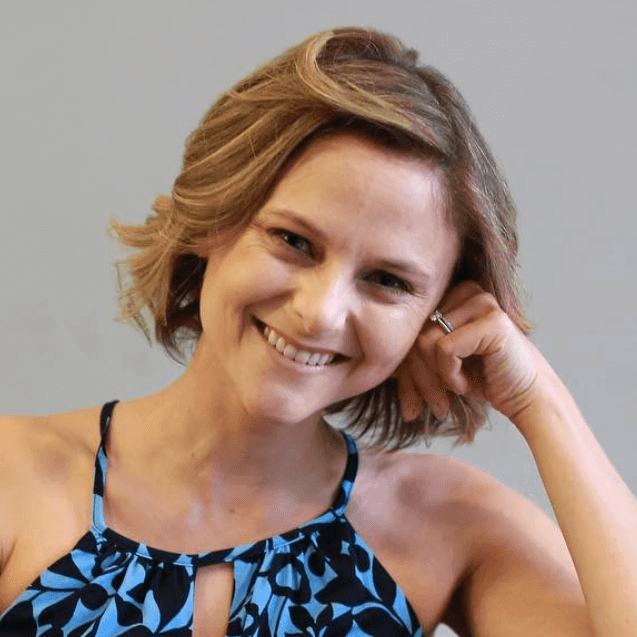Stem Cell Transplant
Stem cell transplant cancer treatment, or SCT, is sometimes used in blood cancers like leukemia, myelofibrosis, lymphoma, and multiple myeloma. Among SCT, there are both allogeneic stem cell transplants and autologous stem cell transplants.
Also known as a peripheral blood stem cell transplant, SCT uses cells from the bloodstream from your body or from a donor.

Auto SCT and Allo SCT
Autologous stem cell transplants, also called auto stem cell transplants, involve collecting a patient’s own cells, storing the cells, and then restoring the cells back into the patient. Allogeneic stem cell transplants, also called allo stem cell transplants, involve finding a stem cell transplant donor, collecting their cells, and then transplanting those cells into the cancer patient.
Expert Dr. David Miklos, Chief of Transplant at Stanford Medical Center shares some of his experience treating with SCT and about the importance of getting stem cell transplant cancer treatment.

We’ve tried high-dose chemotherapy and I’m a stem cell transplanter, so the notion of using high-dose chemotherapy with stem cell rescue or what your patients will know as an auto transplant, has provided much benefit to the patients of mantle cell.
Some of your patients may have had an allogeneic transplant which is truly the immune therapy of someone else’s immune system. Maybe it’s a brother or sister or HLA-identical donor whose blood destroys the white cells, red cells, and regrows and reconstitutes the normal blood system.
What to expect after stem cell transplant
If an oncologist or other healthcare provider has recommended, SCT for you or a loved one, you may wonder about what to expect after stem cell transplant. Patients often report a strong smell of creamed corn or garlic in the room or in their mouth. Other reported SCT side effects include:
- feeling weak
- less urine output
- chest pain
- coughing
- low blood pressure
- tightness in the chest
- hives
- shortness of breath
- fever or chills
Stem cell transplant recovery
Here’s what some cancer patients have to share about their personal experiences and what to expect after stem cell transplant:

They told me no physical contact with other people, no going to the mall, no takeout. I had to go to the hospital pretty much every day.
It wasn’t that bad. I’m pretty sure I went to school still. I don’t think I was supposed to, but I went when I had to.
One day, I went in for a blood work check, they told me my numbers were going up. There was one point where my nurse wanted to give me a transfusion, and I said absolutely not.
I’m really into natural healing and nutrition, so I asked my naturopath and started Googling how to bring my platelets up.
I read that papayas are really good for that, so I was eating a papaya a day. The next time I went back, my platelets were much higher.
Kayla T. (Hodgkin’s Lymphoma, stage 3A, Refractory to Gray Zone Lymphoma)

I had an autologous stem cell transplant and that’s when they take the stem cells from your bone marrow. Stem cells are blood cells that haven’t decided what they want to be yet, they might be red blood cells, white blood cells, or platelets. That is very important in a disease.
It was a monumental day. It’s considered my second birthday, and it’s the day you are given a second chance at life.
So it has a lot of meaning, certainly, but on the day of it was pretty uneventful. They brought them isn on the ice, and there it was, and in the stem cells went.
It was very quick to be honest. It was a very quick procedure. I don’t even think you could call it a procedure to be honest.
Lauren C. (Hodgkin’s Lymphoma, Stage 2A, Relapse, Nodular Sclerosis)

I had nausea, but it was manageable. I had three different nausea medications running 24/7. That was a suggestion from some other people, and it helped so much. I want to be that for others. That’s why I want to be open about my experience.
Scott (Multiple Myeloma, IgG Lambda, Heavy Chain, Stage 3)

Typically, it’s so easy for people to do. For me, the process was a little more excruciating because I’d been in treatment for seven months. My bone marrow was pretty damaged.
When I did the collection, it was very painful. They give you Neupogen shots, which increases the white blood cell count in your bone marrow.
If you can imagine everywhere you have a bone, that’s where I had pain. They had to give me multiple shots because I wasn’t producing enough.
Melissa V. (Multiple Myeloma, Active Myeloma, Stage 3)

I had the autologous transplant, went home for about a month, and then went back in to get my donor cells. I had the second transplant with donor cells.
I had the autologous transplant, went home for about a month, and then went back in to get my donor cells. I had the second transplant with donor cells.
My donor was a young girl in Germany. Someone had to physically fly the cells over and hand deliver them.
It’s really the same process, but I’m getting her cells instead of mine. I got sick, didn’t feel good, and then I started feeling better.
Clay D. (Multiple Myeloma, Relapsed/Refractory)

The side effects were very similar to the chemo and more than anything else, that was the chemo that I was feeling side effects for more than the transplant.
Very intense fatigue. The steroids also made me feel a little bit weird. I was on a pretty high dose of steroids. Lots of upset stomach, I did not want to eat. I did have mouth sores, which with high dose chemo and many other types of chemo is common.
They did give me one type of chemo that is very much I don’t remember the name, but it’s very much known for creating mouth sores and I had mouth sores all the way down inside my throat. So I couldn’t speak and I had a very difficult time swallowing. It resolved itself.
After about a week, it got slowly better. It was unbelievably frustrating because the three things that doctors are constantly telling you to do after transplant is to move around, go for walks, and eat and drink, drink, drink water, water, water, water, water, like they are measuring how much water and food intake and exercise I’m doing every single day.
Mary Clare (Leukemia, Acute Myeloid Leukemia [AML], Relapse)

The mouth sores were by far the worst side effect. They’re so uncomfortable because you can’t eat. I had one in the middle of my throat. I could feel it but I couldn’t pop it. They say you’re not even supposed to run your tongue over it. They told me not to mess with them. It’s just very uncomfortable.
They gave me a steroid rinse too help with them. They were so aggressive in the beginning that it didn’t really do anything for the first two weeks. Then they star to just pop on their own which sounds so gross because it is. When they pop, pus runs out.
It’s by far the grossest side effect. you could see it, you could feel and you know what’s happening, so it’s disgusting. I spit up blood because they were in my mouth and it’s just really really bad.
Casey H. (Leukemia, Acute Lymphoblastic Leukemia [ALL], Relapse)
All stem cell transplant patient experiences
Andrew Ryan P., Testicular Cancer, Stage 4 (Metastatic)
Symptom: Severe leg pain
Treatments: Surgeries (retroperineal lymph node dissection or RPLND, orchiectomy, lung resection), chemotherapy, stem cell transplant
...
Shelley G., Acute Myeloid Leukemia (AML) with NPM1 Mutation
Symptoms: Fatigue, rapid heartbeat, shortness of breath, low blood counts
Treatments: Chemotherapy, clinical trial, stem cell transplant
...
Melissa B., Relapsed Diffuse Large B-Cell Lymphoma (DLBCL)
Symptoms: Lump in the left breast, persistent rash (started near the belly button and spread), intense fatigue and energy loss
Treatments: Chemotherapy (R-EPOCH), Neulasta, radiation therapy, surgery (to remove scar tissue and necrosis), autologous stem cell transplant
...
Dr. Yvonne D., Relapsed/Refractory Multiple Myeloma
Symptoms: Severe hip pain, trouble walking due to a broken pelvis, extreme fatigue, bone pains
Treatments: Chemotherapy, stem cell transplant, radiation therapy, surgeries, CAR T-cell therapy
...
How to Support Someone with Cancer: Karina & Jesse's Myelofibrosis Story
“I underwent a lot of sadness, hardship, and difficulty, and all that entails. But I pressed forward in hope for sure. There was a lot of hope that just kept me going all those years.”
...





